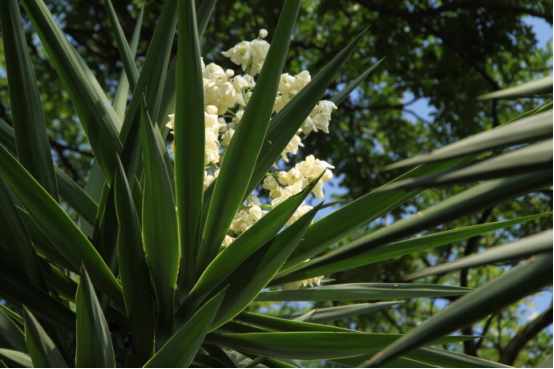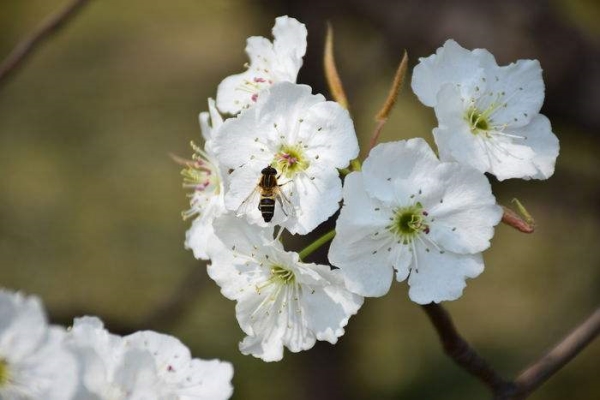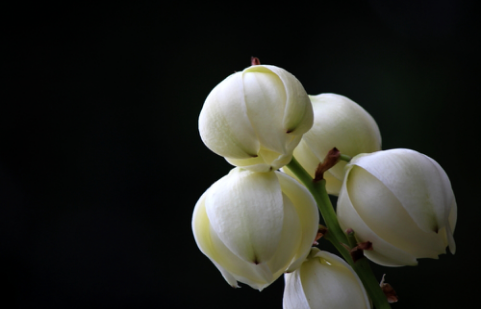How to raise silk orchids?
The main results are as follows: 1. Yucca does not have high requirements for growth environment, so we can choose loose, smooth drainage and nutritious soil for culture, which can ensure the nutrition needed for its growth, and can also choose the soil with slightly rotten soil.
2. Silk orchids like to have a sunny and warm environment during their growth. In summer, we should not let the sun shine directly on silk orchids. At the same time, we should also pay attention to that the temperature is not too low in winter. It is most appropriate to keep the temperature at 10 degrees Celsius.
3. Yucca likes to grow in an environment with plenty of water, so it is necessary to pay attention to watering the soil every day and not to let the soil dry. While ensuring sufficient moisture, we should also pay attention to not making the soil too moist, affecting the roots of plants, causing the roots of plants to rot, and affecting the growth of Yucca.
4. Yucca seldom suffers from the harm of diseases and insect pests, but we should also pay attention to prevention. If diseases and insect pests are found, drug treatment should be taken in time.

Yucca is a kind of beautiful flower that is well bred and has a very high status in the hearts of the people of Seychelles. It is evergreen all the year round, tenacious vitality, unique shape, so in our country, there are many flower lovers like to plant Yucca, and in the cold places in the north, it can also grow.
Culture methods and matters needing attention of Yucca how to raise Yucca
Yucca has developed root system and strong vitality, and its leaves have a thick layer of horny layer and wax quilt, which can reduce evaporation, so it has a strong ability to resist drought. How to raise silk orchids? In this article, the editor will share with you the breeding methods and matters needing attention of Yucan.
Culture methods of Yucca
The propagation by ramet and cutting method is easy to survive and the method is simple. Intercept the aboveground part in spring and autumn and cut off the leaves at the base of 10-15 cm, which can be directly used for planting and greening of garden plants. The whole plant of Yucca can also be dug up and cut into several plants with a sharp knife for planting.
If you need a large number of reproduction, you can use the stem burying method, first cut off the perennial old stem, peel off the leaves, cut into stem segments 5-6 cm long, cuttage, vertical burial, tip slightly exposed, put in the sun, keep the soil moist, in the high temperature season about two weeks can take root, sprout young stems, wait for its complete root system, and then transplant.
How to raise silk orchids
You can also insert the stem into the water, often change the water to keep it clean, and plant it in a pot in time after sending roots.
Matters needing attention in the Culture of Yucca
The main results are as follows: (1) propagate by root tiller, and each tiller bud should bring some fleshy root when planting.
(2) potted plants should use a large pot with a caliber of more than 35 cm and a depth of more than 25 cm. They can grow well without choosing potted soil.
(3) watering the basin soil after drying during the growing period. In order to facilitate root sprouting and pedicel sprouting, soil loosening and fertilization was carried out in April ~ May.
(4) composting and cutting dead leaves should be done in autumn and winter.
How to raise silk orchids, as well as the breeding methods and precautions of silk orchids, will be shared with you today. Yucca has a certain resistance to ammonia and ethylene, so it should be popularized and planted in heavily polluted areas.
Yucca culture management 1, culture can be used ramet, sowing, root cutting, cutting culture, easy to survive, the method is simple.
The main results are as follows: 1) every spring, when the root sprouts and the tiller bud is exposed to the ground, it can be planted separately, but each bud must have a root and be planted in the sandy loam seedling bed.
2) the seeds were sowed after the seeds were mature and could sprout in about 15 days. Yucca seeds could germinate after 3 years, but the survival rate was low.
3) cut the root tip of 10 cm long, insert it into the sand, and take root in a month.
4) intercept the aboveground part in spring and March, and cut off the leaves at the base of 10m / 15cm, which can be planted directly for greening. The whole plant of Yucca can also be dug up and cut into several plants with a sharp knife for planting.
Second, in daily management, we should pay attention to the following points: 1. The plants bred by cuttings and individual plants should be dug up and planted with lodging soil. As long as they are watered several times, they can survive. In daily management, attention should be paid to proper soil cultivation and fertilization to promote the drainage of inflorescences. 2. Saprophytic leaves or peat soil with loose, good drainage and high humus content.
3. Like to be warm and bright, but avoid direct sunlight and are not resistant to cold. North China is suitable for pot and box planting, overwintering indoors or in cold rooms, and the temperature should be kept at 5 Mel 10 ℃. 4. Like humidity, you should fully water outside in summer, but avoid stagnant water, and reduce the amount of water according to the temperature in winter; if the air humidity is too low, it will make the edge of the leaf yellow; it can resist drought and does not require spraying water to the leaf surface or around the plant in summer.
5. Change the basin once in 1-2 years, and the pot change can be carried out in spring; liquid fertilizer can be applied every half a month during the growth period from March to August; inflorescences can be cut off after flowering to maintain plant shape and make terminal buds continue to develop; when dead leaves and stumps are found, they should be pruned in time to keep them clean and beautiful. It should be pruned properly in winter to clean up the withered branches and leaves, which is beneficial to flowering in the coming year. 6. there are few diseases and insect pests, and the room temperature is too high, too dark and the air is blocked in winter, which is easy to cause insect pests, so we should improve the environmental conditions immediately and take measures to prevent and cure the disease.
.
- Prev

Matters needing attention in culturing pear trees
Pear trees love light very much, and sufficient light is conducive to its photosynthesis and the formation of organic matter, which has a great effect on the growth of all organs of pear trees. If the lack of light will lead to the slow growth of the pear tree, and will make the whole pear tree stunted, but also affect the immunity of the pear tree
- Next

Prevention and Control of Diseases and insect pests of Yucca
Yucca has fewer diseases and insect pests, but it is also necessary to do a good job in prevention and control. The common pests are shell insects, whitefly and coir moth, which can be controlled by corresponding drugs. The common diseases are brown spot and leaf spot, which can be controlled by spraying with corresponding powder.
Related
- Fuxing push coffee new agricultural production and marketing class: lack of small-scale processing plants
- Jujube rice field leisure farm deep ploughing Yilan for five years to create a space for organic food and play
- Nongyu Farm-A trial of organic papaya for brave women with advanced technology
- Four points for attention in the prevention and control of diseases and insect pests of edible fungi
- How to add nutrient solution to Edible Fungi
- Is there any good way to control edible fungus mites?
- Open Inoculation Technology of Edible Fungi
- Is there any clever way to use fertilizer for edible fungus in winter?
- What agents are used to kill the pathogens of edible fungi in the mushroom shed?
- Rapid drying of Edible Fungi

